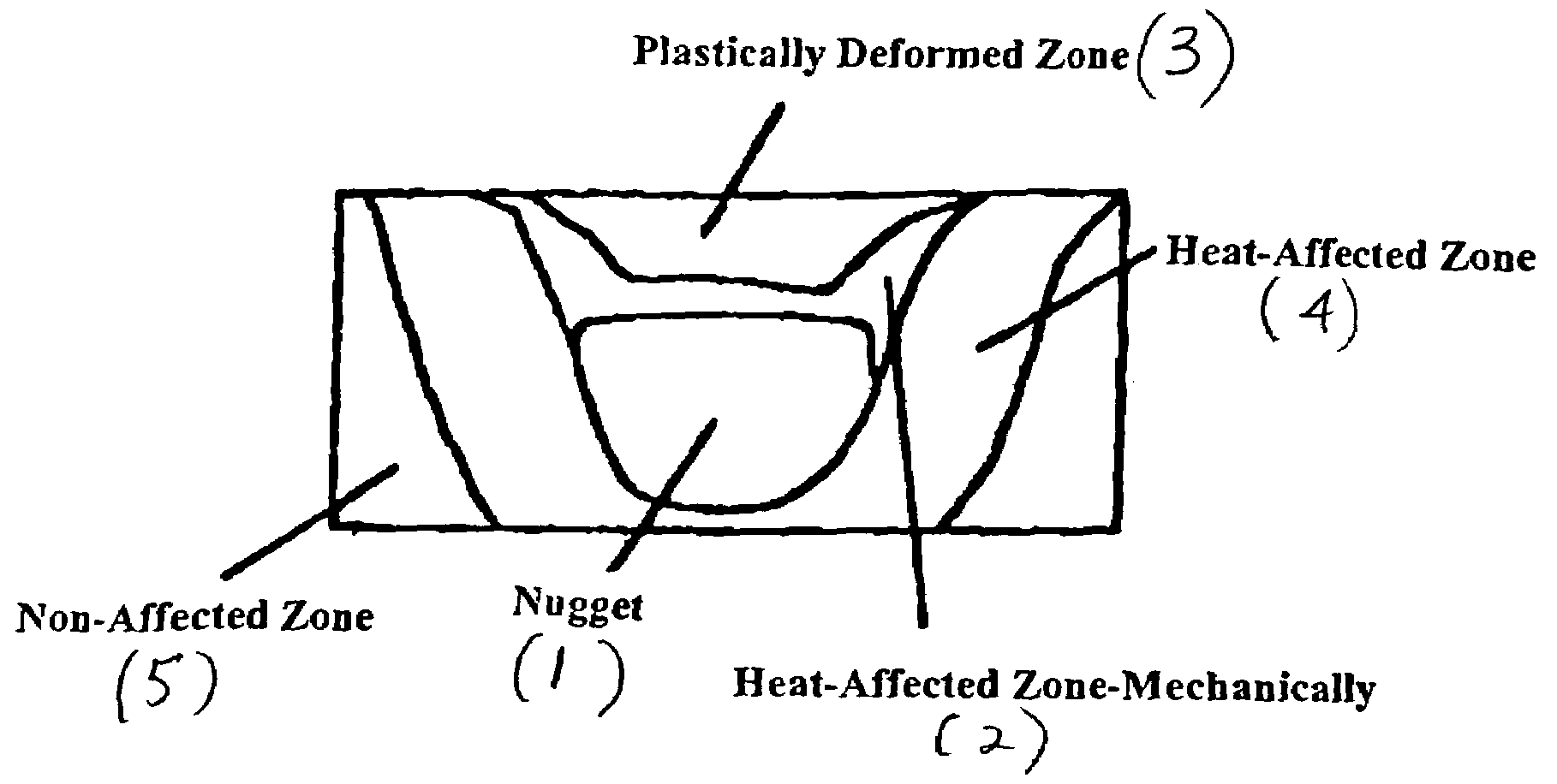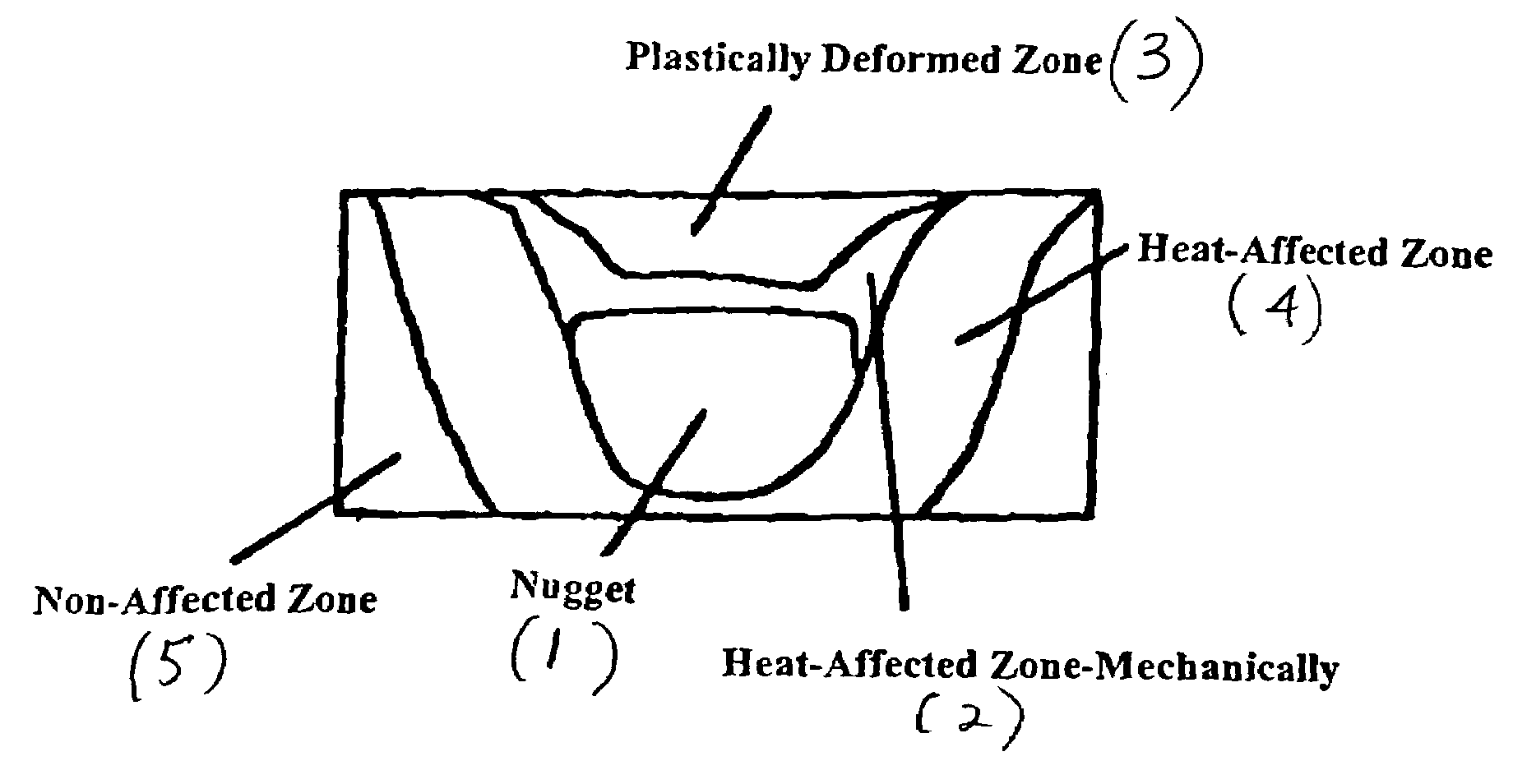Manufacturing method for friction welded aluminum alloy parts
a friction welding and aluminum alloy technology, applied in the direction of non-electric welding apparatus, soldering auxiliary device, soldering apparatus, etc., can solve the problems of inter-granular failure, unstable microstructure, and not very favorable to good mechanical behavior
- Summary
- Abstract
- Description
- Claims
- Application Information
AI Technical Summary
Benefits of technology
Problems solved by technology
Method used
Image
Examples
example 1
[0035]Sheet metal plates made of 7449 alloy were made with the following composition (% by weight):
[0036]
ZnMgCuSiFeZrCrTi8.112.191.940.040.070.090.0050.025
by semi-continuous casting of a plate, followed by homogenization for 30 minutes at a temperature of 475° C. and hot rolling to a thickness of 10 mm. The plates were cut to 260×1000 mm. These plates were treated in the T651 state by solution heat treatment for ½ h at 474° C., followed by quenching in cold water, controlled tension to 2.5% permanent elongation and annealing for 48 h at 120° C.
[0037]The plates were butt welded by friction stir welding using a “Superstir™” type ESAB machine. The tool head was inclined at 2.5 degrees. The rotation speed of the tool was 150 rpm and its advance speed was 200 mm / minute.
[0038]The assembled plates were then subjected to a solution heat treatment after welding including solution heat treatment at 474° C. for 30 minutes followed by quenching in cold water (20° C.). A sample micrography of th...
example 2
[0039]Plates substantially identical to those welded in example 1 were subjected to a homogenization treatment for 72 h at 474° C. They were welded under the same conditions as in example 1.
[0040]The micrography of the welded zone reveals a fine crystalline structure with a relatively homogenous grain size between 50 and 200 μm, with an average on the order of 120 μm.
PUM
| Property | Measurement | Unit |
|---|---|---|
| temperature | aaaaa | aaaaa |
| temperature | aaaaa | aaaaa |
| grain size | aaaaa | aaaaa |
Abstract
Description
Claims
Application Information
 Login to View More
Login to View More - R&D
- Intellectual Property
- Life Sciences
- Materials
- Tech Scout
- Unparalleled Data Quality
- Higher Quality Content
- 60% Fewer Hallucinations
Browse by: Latest US Patents, China's latest patents, Technical Efficacy Thesaurus, Application Domain, Technology Topic, Popular Technical Reports.
© 2025 PatSnap. All rights reserved.Legal|Privacy policy|Modern Slavery Act Transparency Statement|Sitemap|About US| Contact US: help@patsnap.com


